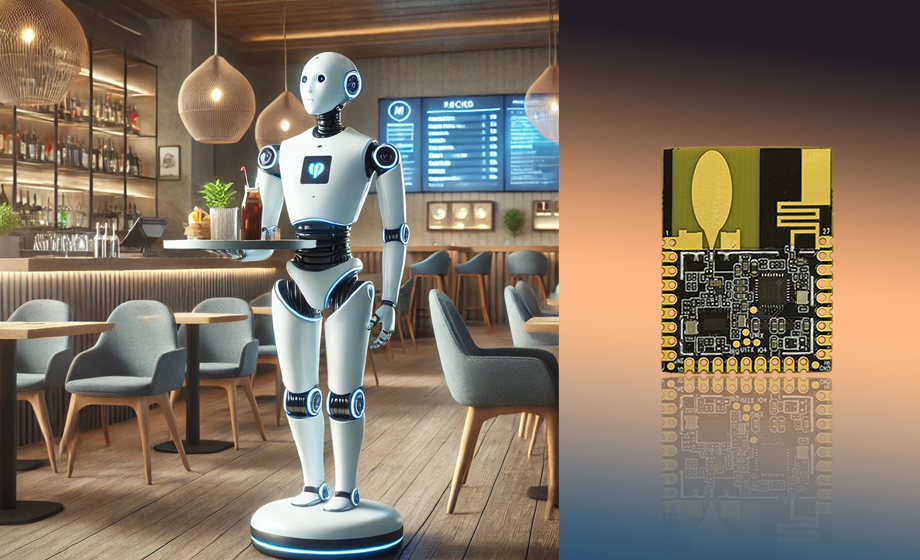In today's robotics field, high-precision positioning and ranging technology plays a vital role in the core functions of robot navigation, obstacle avoidance, path planning and so on. Ultra-Wideband (UWB) wireless ranging module, as a new high precision ranging technology, is gradually becoming a research hotspot in the field of robotics because of its unique performance advantages. This paper will elaborate the principle of UWB wireless ranging module in order to provide readers with in-depth understanding and understanding.

I. Overview of UWB technology
UWB technology is a kind of wireless carrier communication technology which transmits data by nanosecond non-sinusoidal narrow pulse. Compared with the traditional wireless communication technology, UWB technology has the advantages of wide band width, high transmission rate, strong anti-interference ability and strong multi-path resolution. It typically operates in a frequency band between 3.1GHz and 10.6GHz, with a typical bandwidth of 500MHz or higher, which gives UWB signals high resolution in the time domain and can be accurate to the nanosecond level. Therefore, UWB technology is well suited for high-precision ranging and positioning.
Two, UWB wireless ranging module principle
The UWB wireless ranging module utilizes the Time of Flight (ToF) principle. Specifically, the distance between the two devices is calculated by measuring the time it takes the UWB signal to travel in space, combined with the speed of light constant c. The following will introduce the working principle of UWB wireless ranging module in detail.
Single Side two-way Ranging (SS-TWR)
Unilateral two-way ranging is a simple ranging method, its basic principle is as follows:
(1) Device A (range initiator) at a certain time Ta1 transmits a UWB pulse signal of the nature of the request;
(2) Equipment B (ranging responder) receives the signal at a certain time Tb1 and processes it to a certain extent;
(3) Device B emits a responsive UWB pulse signal from Tb2 at a certain time after processing;
(4) Device A receives the response signal transmitted by device B at a certain time by Ta2.
According to the above steps, we can get two time differences: ΔTa=Ta2-Ta1 and ΔTb=Tb2-Tb1. Since the signal travel time between device A and device B is the same, the time of flight of the signal between the two devices ToFA_B=(ΔTa+ΔTb)/2 can be calculated. According to the time of flight ToFA_B and the speed of light c, the distance between device A and device B can be calculated D=c×ToFA_B.
However, there is A potential problem with the unilateral bidirectional ranging method, that is, there may be a certain offset of the clock between device A and device B. This can lead to errors in the measurement results. To solve this problem, the two-sided bidirectional ranging method (DS-TWR) can be used.
Bilateral Two-way Ranging (DS-TWR)
Bilateral bidirectional ranging method is improved on the basis of unilateral bidirectional ranging, its basic principle is as follows:
(1) Device A at a certain time Ta1 transmits a UWB pulse signal of the nature of the request;
(2) Equipment B receives the signal at a certain time Tb1 and processes it to some extent;
(3) At a certain time after the processing of device B, Tb2 simultaneously transmits a UWB pulse signal of response nature and request nature;
(4) Device A receives the response signal transmitted by device B at a certain time, and Ta3 transmits a response UWB pulse signal at a certain time after processing;
(5) Device B receives the response signal transmitted by device A at a certain time Tb3.
According to the above steps, we can get four time differences: ΔTa1=Ta2-Ta1, ΔTb1=Tb2-Tb1, ΔTa2=Ta3-Ta2, and ΔTb2=Tb3-Tb2. From these four time differences, we can calculate the flight time of the signal between the two devices ToFA_B and ToFB_A. Then take the average of the two as the final flight time ToF=(ToFA_B+ToFB_A)/2. Based on the time of flight ToF and the speed of light c, the distance between device A and device B can be calculated D=c×ToF.
By the method of reverse measurement compensation, the influence of clock deviation on measurement results is effectively reduced and the ranging accuracy is improved.
Third, the application of UWB wireless ranging module in the field of robotics
UWB wireless ranging module has a wide application prospect in the field of robotics. For example, in driverless cars, the UWB wireless ranging module can be used to achieve high-precision positioning and obstacle avoidance. In the logistics robot, it can be used to realize the accurate handling and stacking of goods; In the inspection robot, it can be used to realize the accurate recognition and positioning of the target object. In addition, the UWB wireless ranging module can also be integrated with other sensors (such as lidar, cameras, etc.) to further improve the perception ability and intelligence level of the robot.
Iv. Conclusion
UWB wireless ranging module, as a new high precision ranging technology, has a wide application prospect in the field of robotics. This paper introduces the working principle and application scenario of UWB wireless ranging module in detail, hoping to provide readers with in-depth understanding and understanding. With the continuous development and improvement of technology, it is believed that UWB wireless ranging module will play a more important role in the future robot field.



